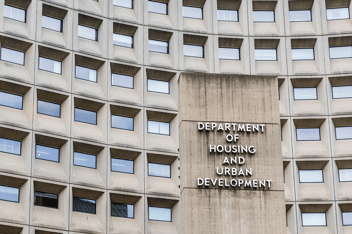HUD announces final rule on affirmatively furthering fair housing
 In a press release posted this morning, HUD announced the release of the final rule on affirmatively furthering fair housing (AFFH). The 377-page rule is pending publication in the Federal Register.
In a press release posted this morning, HUD announced the release of the final rule on affirmatively furthering fair housing (AFFH). The 377-page rule is pending publication in the Federal Register.
Today’s release of the final rule follows publication of the AFFH proposed rule in July 2013. Goals of the proposed rule included replacing the required “analysis of impediments” (AI) with a new “assessment of fair housing” (AFH). A draft template for AFH analysis was released in September 2014. The assessment tool is a document that HUD grantees would use to analyze barriers to fair housing choice and set goals to address them. HUD provided maps and data tables for use with the assessment tool on a dedicated website.
A second AFFH website provides links to the final rule, today’s press release, a one-page fact sheet, and a two-page executive summary. The website describes the final rule as follows:
HUD’s rule clarifies and simplifies existing fair housing obligations for HUD grantees to analyze their fair housing landscape and set locally-determined fair housing priorities and goals through an Assessment of Fair Housing (AFH). To aid communities in this work, HUD will provide open data to grantees and the public on patterns of integration and segregation, racially and ethnically concentrated areas of poverty, disproportionate housing needs, and disparities in access to opportunity. This improved approach provides a better mechanism for HUD grantees to build fair housing goals into their existing community development and housing planning processes. In addition to providing data and maps, HUD will also provide technical assistance to aid grantees as they adopt this approach.
A summary of major provisions of the final rule begins on page 4 of the PDF document:
- Replace the AI with a more effective and standardized Assessment of Fair Housing (AFH) through which program participants identify and evaluate fair housing issues, and factors contributing to fair housing issues (contributing factors);
- Improve fair housing assessment, planning, and decision making by HUD providing data that program participants must consider in their assessments of fair housing — designed to aid program participants in establishing fair housing goals to address these issues and contributing factors;
- Incorporate, explicitly, fair housing planning into existing planning processes, the consolidated plan and PHA Plan, which, in turn, incorporate fair housing priorities and goals more effectively into housing, and community development decision making;
- Encourage and facilitate regional approaches to address fair housing issues, including collaboration across jurisdictions and PHAs; and
- Provide an opportunity for the public, including individuals historically excluded because of characteristics protected by the Fair Housing Act, to provide input about fair housing issues, goals, priorities, and the most appropriate uses of HUD funds and other investments, through a requirement to conduct community participation as an integral part of the new assessment of fair housing process.
Nan McKay and Associates can bring standard or customized fair housing training to your agency onsite. Email sales@nanmckay.com for details.


